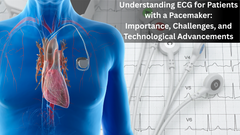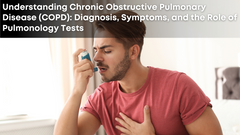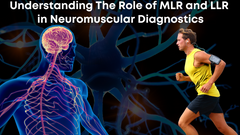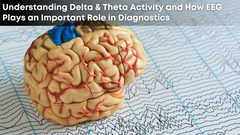CLADS: Reducing the risks in Cardiac Surgery, Heart Patients, and High Altitude Environments
Closed-Loop Anaesthesia Delivery Systems (CLADS) are proven valuable tools in various medical specialties, including cardiac surgery, heart patients, and high-altitude environments. These systems combine real-time patient monitoring, automated dosing adjustments, and advanced algorithms to optimize anaesthesia delivery and enhance patient outcomes. This article will explore the benefits and considerations of working with CLADS in cardiac surgery, heart patients, and high-altitude settings.
CLADS in Cardiac Surgery
Cardiac surgery poses unique challenges due to the complex nature of the procedures and the critical condition of patients. CLADS offers several advantages in this context:
- > Precise Haemodynamic Control: CLADS helps medical professionals continuously monitor vital signs, including blood pressure, heart rate, and oxygen saturation. This real-time data allows for precise haemodynamic control during cardiac surgery. The system can automatically adjust anaesthetic dosing based on fluctuations in patient physiology, optimizing cardiac function and reducing the risk of complications.
- > Tailored Anaesthesia for Individual Patients: Cardiac surgery patients often have varying degrees of cardiac dysfunction and comorbidities. CLADS can account for these individual characteristics and adjust anaesthetic delivery accordingly. By personalizing the anaesthesia regimen, CLADS helps to maintain haemodynamic stability and improve patient outcomes.
- > Reduced Cardiac Stress: The precise control offered by CLADS minimizes haemodynamic fluctuations during cardiac surgery. Reducing cardiac stress can be particularly beneficial for patients with compromised heart function. By maintaining stable vital signs, CLADS contribute to improved cardiac function and reduced perioperative complications.
CLADS and Heart Patients
For patients with pre-existing heart conditions, anaesthesia and surgery carries additional risks. Using CLADS can address some of these concerns:
- > Enhanced Safety for High-Risk Patients: Heart patients often have compromised cardiac reserves and increased vulnerability to haemodynamic instability during anaesthesia. CLADS continuously monitor vital signs and adjusts anaesthetic dosage to maintain stable haemodynamic, reducing the risk of adverse events in high-risk patients.
- > Individualized Care and Medication Optimization: CLADS utilizes advanced algorithms to adapt anaesthetic delivery based on the unique characteristics of heart patients. This individualized care allows for optimal medication dosing, ensuring adequate anaesthesia while minimizing potential risks to the cardiovascular system.
- > Continuous Monitoring and Early Intervention: CLADS provides real-time monitoring of heart patients, allowing for early detection of any cardiac complications or deviations from the expected range. This early warning system enables prompt intervention and improves patient safety during anaesthesia and surgery.
CLADS in High-Altitude Environments
High-altitude environments pose specific challenges due to lower atmospheric pressure and decreased oxygen availability. Working with CLADS in these settings can offer significant benefits:
- > Oxygen Conservation: CLADS, particularly closed-loop systems utilizing low-flow anaesthesia techniques help conserve oxygen in high-altitude environments. By reducing the fresh gas flow rates, these systems minimize the consumption of oxygen while maintaining the desired anaesthetic depth. This is particularly advantageous in locations where oxygen availability may be limited or compromised.
- > Individualized Management: CLADS allows for individualized management of patients in high-altitude settings. The system continuously monitors oxygen saturation levels, adjusting anaesthetic delivery to ensure adequate oxygenation. This personalized approach mitigates the risk of hypoxemia and optimizes patient care in environments with decreased oxygen tension.
- > Enhanced Patient Safety: The ability of CLADS to adapt anaesthetic delivery based on real-time patient data is crucial in high-altitude environments. These systems closely monitor vital signs and adjust anaesthetic dosing to maintain stable oxygenation and prevent complications associated with altitude-related physiological changes.
Considerations and Future Directions
While CLADS offer numerous benefits, several considerations should be taken into account when working with these systems:
- > Training and Familiarity: Proper training and familiarization with CLADS are essential for healthcare professionals to utilize these systems effectively. Adequate knowledge and experience will ensure optimal patient outcomes and maximize the benefits offered by CLADS.
- > Technical Limitations: CLADS may have technical limitations or compatibility requirements in specific cardiac surgery procedures, heart patients, or high-altitude environments. Healthcare providers must be aware of these limitations and adapt their practice accordingly.
- > Future Developments: Ongoing research and technological advancements will likely enhance CLADS' capabilities further. Continued refinement of algorithms, integration with electronic health records, and interoperability with other medical devices will expand the potential applications of CLADS and improve patient care.
Final thoughts
Closed-Loop Anaesthesia Delivery Systems (CLADS) have demonstrated significant benefits in cardiac surgery, heart patients, and high-altitude environments. These systems provide precise haemodynamic control, tailored anaesthesia delivery, and enhanced patient safety. In cardiac surgery, CLADS optimizes cardiac function and reduce perioperative complications. For heart patients, CLADS offers individualized care and mitigate the risks associated with anaesthesia. In high-altitude environments, CLADS conserve oxygen and ensure optimal patient management. With ongoing advancements, CLADS holds promise for further improving patient outcomes and transforming the practice of anaesthesia in these specialized settings.












